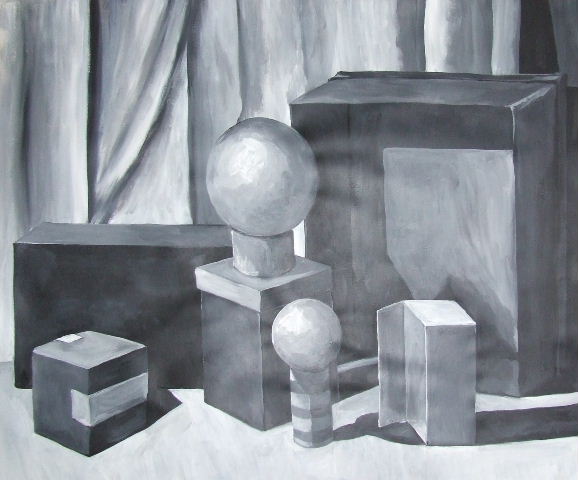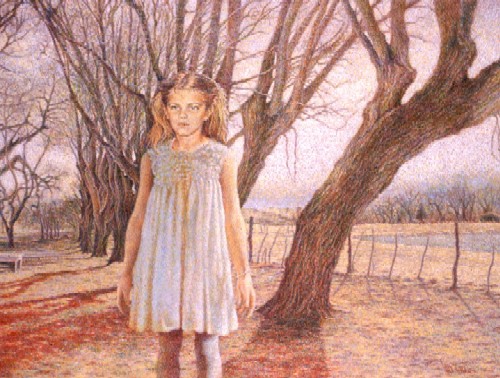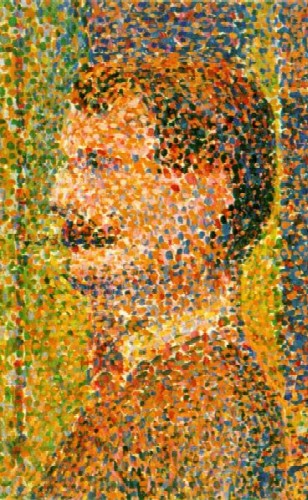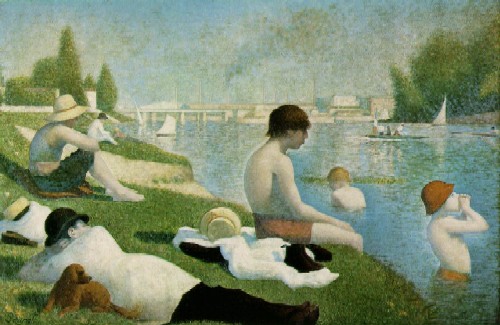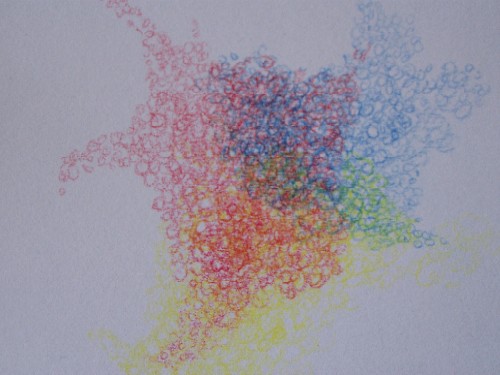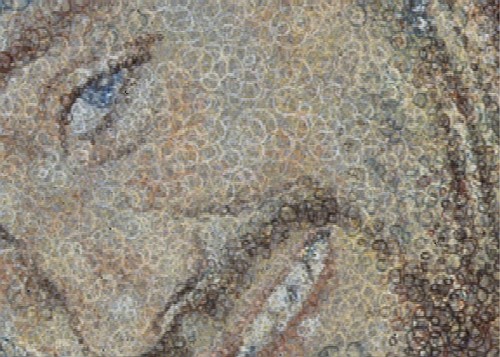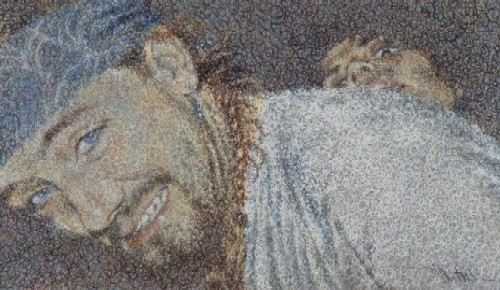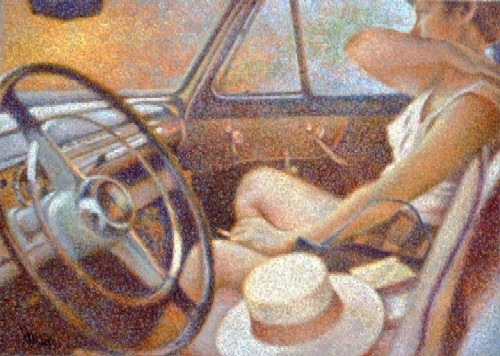Pointillism
Circulism is a technique related to pointillism. Pointillism originated as an artistic movement in France. The aim of this movement was to accentuate light by analyzing colors. Pointillism has a scientific background. In traditional painting, different colors are created by mixing paint to the right hue and applying it to the canvas. In pointillism, paint dots in primary colors are applied to the canvas. The functioning of the human brain causes a secondary color to be perceived. For example, placing small red and yellow dots next to each other creates the perception of orange. The dots are usually placed on a white background. Pointillist paintings stand out for their very bright, almost luminous impression.
|
George Seurat
George Seurat became particularly well-known for his contributions to pointillism. He first tested his theory that small dots, when viewed from a distance, blend together in the viewer's eye on the large canvas "La baignade à Asnières" (1883-1884; National Gallery, London). The colors on this canvas were still mixed. In subsequent works, such as the large canvas "Dimanche d'été à la Grande Jatte" (1886; Art Institute in Chicago), he placed unmixed (primary) colors side by side.
|
Optical blending
The similarity lies in the fact that both techniques utilize the optical blending of colors. Circulism is essentially the drawing of many small circles intertwined and overlapping with each other. The circles do not need to be perfect to achieve a beautiful effect. One drawing consists of thousands of circles. The circles do not have a fixed size, and all colors can be used interchangeably. You can also choose to build your artwork using only one or a few colors, depending on your preference. The technique is easiest to apply with pencils. In theory, the technique can also be used for other materials such as markers and ink.
|
Maggie Toole
Maggie Toole builds her work up in multiple layers. First, she establishes a composition of what you want to draw. Then, she slowly begins to outline the shapes with light colors. After the light colors, she further develops the drawing with mid-tones. The circles come in different sizes. Don't be afraid to use colors. It doesn't matter if you haven't used the exact right color. Just stop and continue with another color. This actually makes the whole thing livelier and more natural. Once the picture is quite clear, add highlights, and finally, for the finishing touch, add the last details. Still, all built up from circles. Here you can see a detail of a piece of work. The different colors and sizes of circles are clearly visible.
|
Mysterious
When looking at Maggie Toole's artworks, you can see that she subtly conveys mood and feeling. The technique enhances this effect even more. There seems to be a mysterious layer over the artworks. This is a characteristic effect of Circulism. There are no smooth, unnaturally uniformly colored areas, and there are no straight lines to be seen. Hard lines are avoided by the use of circles.
|
Own life
Many people now use the technique, and some of them have added special rules, such as that all circles must be very small and that you should ensure that the points of your pencil are always very sharp. Circulism has taken on a life of its own. These are things that Maggie herself never paid attention to. According to Maggie, the most important thing about Circulism is that it constantly reminds her that there are no rules in drawing... Because you work with many colors and layers, you can hardly do anything wrong. She uses 50-75 colors per drawing, from different brands. A few circles of the wrong color are easily resolved by adding more circles and another color... Circulism helps her to "stay loose."
|



